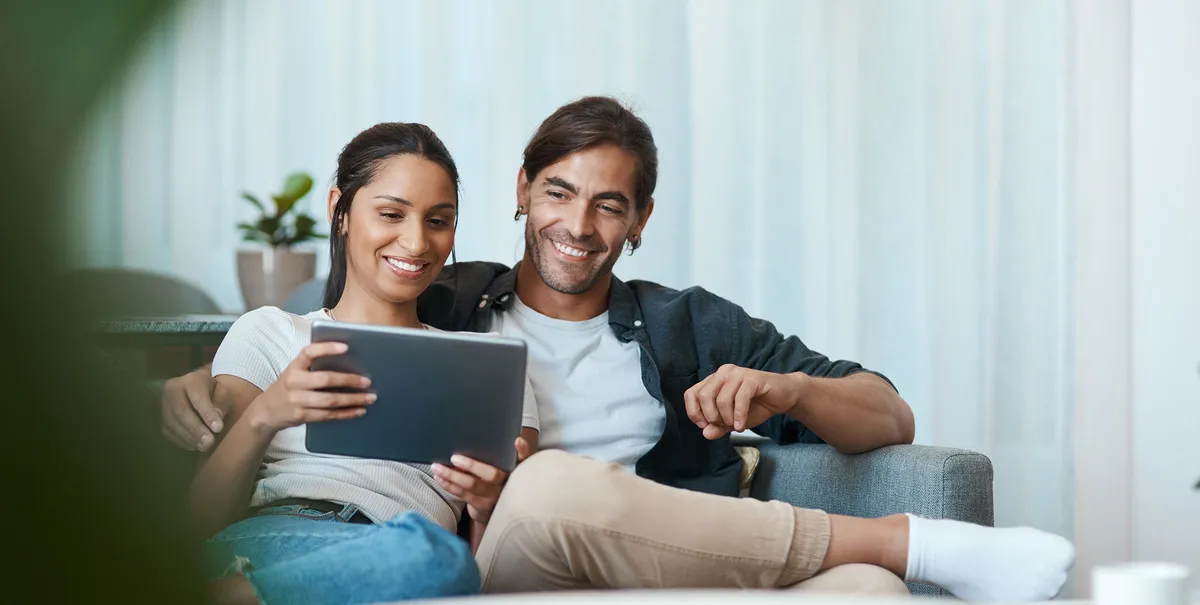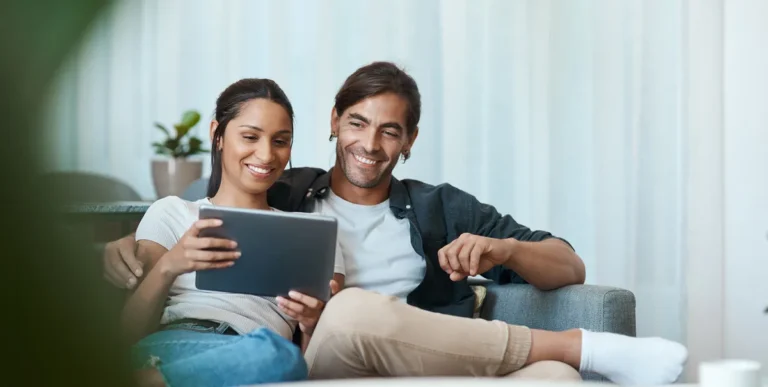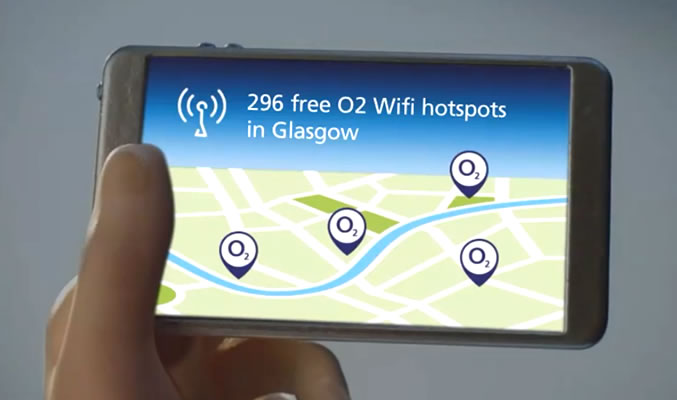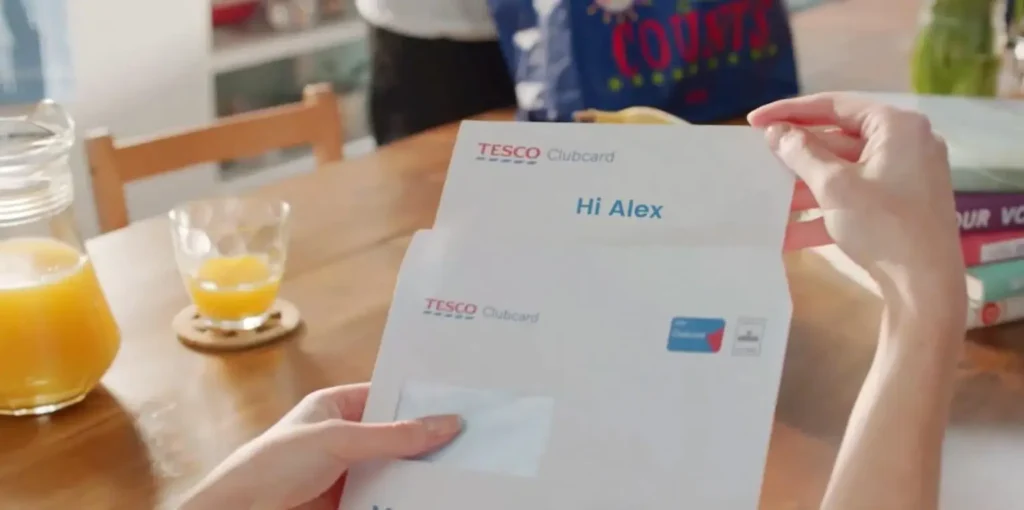In this distracted and tuned-out world, brands need creative ways to engage consumers, and video consistently delivers. According to our State of Video Technology report, 83% of consumers say they want more videos from brands, with 82% of those who have received video saying they enjoy the content. Better yet, 90% of marketers report that video gives them positive ROI.
Whether it’s laugh-out-loud video clips or the heartwarming videos that make us feel warm and fuzzy, video has an emotional appeal unlike other media. It engages on multiple levels with movement, sound, in-video text and more — the next best thing to being there in person, connecting 1:1 with the brand.
In this post, we’ll explore some of the best video marketing examples from brands and explain why they work. We’ll also talk about how you can make video even closer to a 1:1, personal connection with your customer.
First up? A telecommunications company with a knack for storytelling.
Video Marketing Meets Storytelling With O2
This video from the O2 Refresh campaign takes a storytelling approach to upselling. Instead of going straight for the sale, it sends consumers on a ride into the future. As they tell it, upgrading is “like being whisked off on a surprise trip.” Doesn’t that sound fun?
One of the strengths of this campaign lies in its personalization. Look for personalized elements within the video that help make the story more relevant, and therefore more immersive, for the viewer. Here’s one at the 39-second mark: the number of O2 WiFi hotspots in Glasgow, where this customer, Tom, lives.
This detail not only enhances relevance but also makes the storyline more immersive and valuable for the viewer. It’s a strategic move that reinforces the idea that O2 understands and caters to its customers’ needs.
Of course, the storytelling has a practical side, too. The video clearly explains how the customer can trade in their device to save money on their upgrade. This dual focus on storytelling and practicality ensures that the video doesn’t just entertain the viewer but also nudges them towards conversion.
Here’s a quick run-down of why this video works on several levels:
- Uses humor and a conversational tone to engage viewers
- Makes the benefits easy to understand at a glance
- Creates a sense of excitement by putting the customer at the center of the story
The cherry on top? O2’s approach taps into the psychology of storytelling, which is a powerful tool for memory. Some research suggests that facts are 20x more likely to be remembered if they’re part of a story. With this campaign, O2 shows us it’s not just about selling the product — it’s about telling a story that sticks with the viewer even after they’ve watched the video.
Song and Dance, Burberry-Style
Burberry got everyone talking with its 2020 Christmas advertisement. The video was an all-singing, all-dancing affair, with the dancers dressed in Burberry’s latest merch.
In the video, Burberry uses an updated version of “Singin’ in the Rain.” The combination of classic music and modern choreography created a unique experience that resonated with audiences worldwide, with its popularity on YouTube showing how Burberry managed to capture our imaginations.
What makes it so appealing?
- Timing: Its message was unity at a time when so many of us were apart from others due to COVID. And by leaning into the feelings of hope that arise during the holiday season, the ad’s emphasis on connection felt timely and appropriate.
- Energy: The video is loaded with optimism, capturing a bright mood even with a fairly short clip. That’s the kind of positivity you want people to associate with your brand.
- Storytelling: Do we need to say it again? Setting the scene helps create a story. The dancing is all the more magical because the backdrop seems like everyday real life.
Burberry’s ad is a masterclass in combining emotion, entertainment and branding. By aligning their message with the spirit of the times and injecting it with joy and style, Burberry created a memorable and impactful campaign.
Adidas Captures Customers on Camera
What about a campaign that puts your customer in the video — not just metaphorically like in the O2 example above — but literally. That’s what adidas did for some 30,000 Boston Marathon runners.
As a sponsor of the Boston Marathon, adidas sent a dynamic video to each runner, including race data and actual footage of that runner. Talk about a way to stand out from the crowd!
Did it work? Absolutely. Over a quarter of runners shared their video, with the campaign driving over 80,000 visitors to the company’s web properties. Even better, the email open rate was 2x the brand’s own benchmarks and product sales from emails with the video were up an incredible 1,189%.
If you’re wondering what made it so successful, two things stand out.
- Instant shareability: People love sharing content about themselves. This video hit the sweet spot to let people brag on their achievement — and who doesn’t love that?
- Inspiring and compelling: Even if you didn’t take part in the Boston Marathon (I didn’t), you probably feel the energy of the video as you watch it. The theme is creating legends and it’s backed up in the music, text, visuals, everything.
According to a study by The New York Times, one of the core reasons people share content is to define themselves to others. Adidas tapped into this intrinsic human desire perfectly, with the campaign amplifying the brand’s reach organically and deepening its connection with its customers.
So the takeaway here? Personalized, shareable content can turn an ordinary marketing campaign into an extraordinary one. When customers see themselves as the main character of a story, they’re more likely to engage, share and, ultimately, convert.
McDonald’s Takes a Tip From Customers
McDonald’s rarely disappoints with its video campaigns. Remember the LeBron advert from years back? It was a classic ad that tapped into celebrity power to captivate its audience.
But you don’t need a star-studded cast to make an impactful campaign. Sometimes, all it takes is a simple suggestion from your customers.
Fast forward to 2020. Like so many other restaurants, McDonald’s had to shut up shop during the pandemic. But they announced their comeback in a big way. The song of choice for their video? “Return of the Mack,” of course.
If you don’t know the song, it was a massive hit in the U.K. for Mark Morrison back in 1996. McDonald’s use of this tune is unique because it was actually suggested by fans — around 15,000 Twitter users.
This clever move not only tapped into a sense of nostalgia but also made customers feel heard and valued. By choosing a fan-suggested song, McDonald’s showcased an excellent example of how brands can create a deeper connection with their audience.
The brand’s decision to have the ad feature everyday people and their song suggestion also perfectly complemented the theme of it welcoming back customers after lockdown. It’s a great reminder that sometimes the best stories are the ones that come directly from the people who experience them.
When you need inspiration for your next video, consider asking the people you’re making it for: your customers. After all, who knows better what resonates with your audience than the audience itself?
Zynga Gets Personal With Recap Campaigns
Zynga is a leading game developer that has created wildly popular mobile games. As part of its #WhatsYourWordStyle campaign, Zynga used a recap video to remind players why they love the game. The goal? Reengaging disengaged players and promoting a new feature in the game.
Videos included key stats like the player’s winning streak and average points. And they were personalized, so the facts and figures were just for the individual player who received the recap. The campaign was a hit, driving feature adoption, engagement and social sharing.
By reminding players of their achievements and incorporating a sneak peek of new game features, Zynga effectively reengaged their audience. It was the kind of campaign that not only led to measurable results but also strengthened the emotional connection between players and the game.
Thanks for compiling my personalized #WordStyle https://t.co/6WgtWFThZx
— Martha Gray-Heffner (@MightyMartha7x) March 9, 2020
Dynamic video recap campaigns work in a range of industries, from hospitality to wellness.
Results from personalized recap videos:
- 5x uplift in social sharing
- 81% conversion rate
- 10x higher engagement
As you can see, combining personalization with video is an effective strategy for capturing consumer attention. Standing out amidst the digital noise means speaking to your audience 1:1 — and Personalized Video does just that.
A personalized year in review, highlights reel or other recap video is a great way to make it all about them — exactly what customers love. So next time you’re optimizing your marketing strategy, consider how you can make it personal. It’s a strategy that not only boosts engagement but also encourages a stronger connection between the brand and the customer.
Fenty Gets Real With UGC
In 2017, singer Rihanna launched Fenty Beauty, her first solo cosmetics brand that stood out for its inclusive products made for all skin tones. The new brand became an instant hit, reportedly selling more than $100 million in just the first few weeks.
Their marketing campaign relied heavily on influencers, especially user-generated video content. Rather than short clips, most of the UGC videos are in-depth reviews that talk viewers through how to use the product and what they think of it. (We actually struggled to find a video under 4 minutes to show as an example. This one by YouTuber Stephanie Villa is more the norm.)
Within days of their launch, Fenty had 1.4 million Instagram followers, and their YouTube channel, where they regularly post content, has more than a million subscribers today. Many of the influencers who post videos on Fenty’s behalf are part of their affiliate program, meaning Fenty only pays them if they make a sale, a win-win for the YouTuber and the brand.
The success of Fenty’s strategy is rooted in its authenticity. By leveraging user-generated content, they showcase real people of diverse backgrounds using their products. This approach not only underscores its core value of inclusivity but also builds trust with its audience.
- Takeaways from this strategy?
- The videos feature real people, showing the viewer what’s possible and creating a sense of authenticity, especially important for Gen Z.
- The tone is always warm and relatable, well suited for this brand. It’s like getting beauty tips from a friend, which aligns perfectly with the brand’s emphasis on being inclusive and empowering its customers.
- Products get the endorsement of influencers who have already earned consumers’ trust.
- It’s OK to have long videos. Yes, short-form videos can work great, but longer videos — when they add value — are powerful. The average YouTube video length is nearly 12 minutes long.
All in all, Fenty’s use of UGC not only boosted their initial brand visibility but also created an engaged community around their products, turning customers into advocates. By showcasing diverse voices and providing in-depth product insights, they set a new standard for effective video marketing in the beauty industry.
Real-Life Success Stories From Fitbit
Fitbit got personal with its ”Find Your Reason” video advertising by including inspiring stories of how users had changed their lives by wearing a Fitbit.
Perhaps the most heartwarming story was about a woman with Type 2 diabetes who was struggling to get pregnant. After losing weight with help from Fitbit, she’s reversed her diabetes and finally realized her dream of becoming a mom.
This emotional campaign didn’t just highlight the health benefits of using Fitbit — it struck a chord with viewers around the world. By shining a light on the community of real people who use its products, Fitbit humanized its brand, making its offerings more relatable and compelling to a broader audience.
Video was a key element here. The format allowed Fitbit to weave together visuals, music and real-life testimonials that resonated deeper than just words or images alone. This emotional engagement is essential for building a genuine bond between the brand and its audience.
Overall, Fitbit’s video confirms two things:
- Success stories that illustrate how a product or service is effective (read: changes lives) are vital in a marketing strategy. Remember the old adage to show instead of tell. Video lets you do that.
- Diversity is key. Fitbit did a great job, in less than 30 seconds, of showing all kinds of people, reflecting how diverse their customer base is. To make sure your video resonates with your audience, be intentional about the clips you gather, whether it’s UGC or stock footage.
Fitbit’s “Find Your Reason” campaign proves that video is one of the best ways to share stories that inspire, connect and stay with you. By focusing on real-life triumphs and celebrating diversity, brands can create campaigns that hit home and build lasting bonds with their audience.
Video Marketing That Works
Video marketing is about understanding what resonates with your audience.
In a world where we often feel disconnected, using video to connect 1:1 with your customer is a great way to get noticed and, more importantly, remembered.
Personalized Video takes this connection to the next level by tailoring content specifically to each viewer. And with the latest developments in technology, it’s never been easier to create dynamic, data-driven video at scale, for thousands or even millions of your customers.
Whether you’re new to video marketing or looking to enhance your current strategy, Personalized Video can help your business improve CX and maximize your marketing efforts.
Want to learn more about how to create short marketing videos that wow customers? Download our free ebook covering 9 ways to personalize and repurpose video content.







